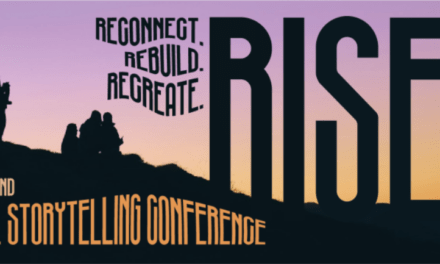The entertainment industries create the most widely circulated popular images of children and childhood, and yet the role of children in celebrity studies warrants further study. As John Mercer and Jane O’Connor (2017) point out, the intersection between Childhood Studies and Celebrity Studies has been gaining traction in recent years, highlighting a tension between the dominant discourses of innocence surrounding children, and the highly competitive commercial imperatives of celebrity culture.
New participatory entertainment ecologies have created new opportunities for child performers, leading to the rise of new kinds of child celebrities and surrounding reception cultures. For instance, on YouTube, the world’s most popular user-generated video streaming service, some of the most successful celebrities are children: eight year old Ryan Kaji – a North American child who reviews toys for the channel ‘Ryan’s World’ (formerly ‘Ryan ToysReview’) – was the highest-earning YouTube personality of the year in both 2018 (Statista, 2019) and 2019 (Berg, 2019).
The child on screen, the child viewer, and the child star continue to be influenced by concepts of childhood that first emerged in the 19th century, eliciting discourses of harm and protection and attracting waves of moral panic in different eras. These public debates most often reveal more about adult sensibilities around often nostalgic notions of childhood than they do about children themselves. As Karen Lury puts it, “the essential understanding of the child here is the child as being rather than becoming”(2005: 314), a subject lacking agency, which leads Hugh Cunningham to caution “we need to distinguish between children as human beings and childhood as a shifting set of ideas” (2005: 1). In the current cultural moment and in prior eras, the categories of child and adult are mutually reinforcing ideals that are articulated and reflected in a range of distinctive ways through celebrity culture. For example, since the world went into lockdown, the family home has taken centre stage for live broadcasts and social media feeds, and as a result viewers have been inundated with images of celebrities in isolation with their children.
There is more cultural evidence around childhood as a cultural concept than the lived experiences of children, a distinction which becomes key when considering children as fans of child and adult celebrities. In the field of Fandom Studies, Kyra Hunting notes the tendency to examine adolescent and teen media fans at the expense of children. She suggests this is partly due to practical, methodological reasons around collecting data, but argues it also reveals a resistance to framing children’s participatory media engagement as a form of fandom. This is despite the fact that “the playing child” functions as a “model for fandom” studies (Hills, 2002: 9). As such, we need to be mindful of how the child audience is addressed by star vehicles and paratexts, compared with what children actually do as fans, even (or particularly) if this does not accord with teen and adult models of fandom, and what intergenerational modes might be in play.
We seek original essays of 6-8000 words that address children and celebrities through an interdisciplinary approach, across a range of media forms and eras, for a special issue of Celebrity Studies (prospective publication 2023, pending the journal’s review of abstracts).
We will be looking for internationalisation, a range of scholarly experiences, gender balance, and that each of the abstracts tackles their topic or research question through broad and dynamic celebrity intersections.
Topics that the articles may address include, but are not limited to:
- Examination of specific child stars or celebrities
- Fandom around child stars, among children and/or adults
- Child fans of adult stars
- On and off-screen dynamics between child stars and their co-stars
- Child celebrities and their online persona
- ‘Fur babies’: celebrity companion animals as ‘children’
- Intersectional explorations of gender, race, and/or sexuality around child stars, from their youth through to adulthood
- Nostalgia around child stars of the past
- Intergenerational spectatorship and child celebrities
- Public discourses around child star breakdowns
- Acting and screen performance
- Ageing child stars
- Children on reality TV
- The child actor industry
- Child actors in adult film and television
- Celebrity families in music, film, television and social media cultures
- Child labour and consent
- Child stars and stalkers
- Children of celebrities
- Children, celebrity culture, and moral panic
- Child stars and merchandising
- Children, celebrities and genre
- Adult stars who feature in children’s film and television
Please send proposals of 300 words and a 50 word author bio to Djoymi Baker djoymi.baker@rmit.edu.au, Jessica Balanzategui jbalanzategui@swin.edu.au, or Diana Sandars sandars@unimelb.edu.au by 7 August 2020.
Djoymi Baker is a Lecturer in Media and Cinema Studies at RMIT University, Australia. She is a prize-winning writer on topics such as genre studies, fandom and myth in popular culture. Djoymi is the author of To Boldly Go: Marketing the Myth of Star Trek (I. B. Tauris, 2018) and the co-author of The Encyclopedia of Epic Films (Rowman & Littlefield, 2014). Her current research examines children’s film and television history.
Jessica Balanzategui is a Lecturer in Cinema and Screen Studies at Swinburne University of Technology and a Chief Investigator at the Centre for Transformative Media Technologies. Her research examines screen genres across film, television and digital media for and about children, and the impact of technological and industrial change on entertainment cultures. Jessica is the author of The Uncanny Child in Transnational Cinema (Amsterdam University Press, 2018), and the founding editor of Amsterdam University Press’s book series, Horror and Gothic Media Cultures. Jessica is also an editor of Refractory: A Journal of Entertainment Media.
Diana Sandars is a Lecturer in the School of Culture and Communication at the University of Melbourne, Australia, where she teaches courses in Screen, Gender, Digital Cultures, Social Justice and Cultural Studies. Diana has a research focus on the child in, and subject of, screen media. Diana is the author of What A Feeling: The Hollywood Musical After MTV (Intellect, forthcoming).
References
Berg, M, 2019, “The highest paid YouTube stars of 2019.” Forbes 18 December. Available at: https://forbes.com/sites/maddieberg/2019/12/18/the-highest-paid-youtube-stars-of-2019-the-kids-are-killing-it/#446f8a3338cd (accessed 19 December 2019).
Cunningham, Hugh, 2005, Children and childhood in western society since 1500, New York: Routledge.
Hills, Matt, 2002, Fan Cultures, London: Routledge.
Hunting, Kyra, 2019, “Finding the child fan: A case for studying children in fandom studies,” Journal of Fandom Studies, Vol.7, No. 2, pp. 93-111.
Lury, Karen, 2005, “The Child in Film and Television,” Screen, Vol. 46, No. 3, Autumn, pp. 307-314.
Mercer, John, and Jane O’Connor, 2017, Childhood and Celebrity, London: Routledge.
Statista, 2019, “Most popular YouTube channels as of September 2019, ranked by number of subscribers (in millions).” Available at: https://statista.com/statistics/277758/most-popular-youtube-channels-ranked-by-subscribers/ (accessed 01 December 2019).





